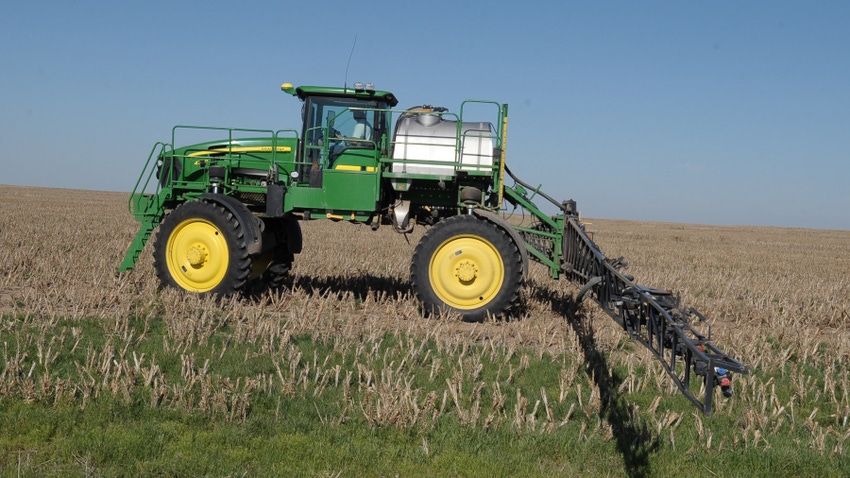
Farmers should be prepared for temperatures to heat up through the last part of June. That means they need to pay special attention to their herbicide applications in high heat conditions, explains Sarah Lancaster, Kansas State University Extension weed science specialist.
Lancaster wrote about four herbicide application management tips in the June 15 Agronomy eUpdate.
Heat or drought stress slows the plant growth processes. As temperatures climb above 85 degrees F, she writes, plants being to slow or stop their metabolic processes, which move herbicides through the plant. If you’re applying systemic herbicides (glyphosate, Select or Assure) do so early in the morning, after the plants have a chance to recover from the heat stress of the day prior. And remember, if you’re applying HPPD-inhibiting herbicides (Callisto or Balance Flexx), just know that palmer amaranth plants can overcome these herbicides when applied at temperatures of 90 degrees or warmer.
Leaves change in response to heat. Remember, the plant’s defense mechanisms against heat are its cuticles, which become waxier to prevent water loss from its leaves. Some plants may change their leaf angles in response as well. To bypass these defenses, Lancaster recommends using the maximum labeled rates of herbicides and surfactants to get more spray solution into the plant. And spray during the cooler part of the day to reach the leaves at their peak angle.
Don’t forget: Your crops react to heat as well. The same heat that affects weeds in the field causes crop responses as well. If you’re applying foliar, non-translocated herbicide, in hot and humid conditions, those contact herbicides (Cobra, Liberty or Reflex) will likely result in greater foliar injury to your crops — as well as greater weed control. Lancaster recommends postponing applications if temperatures are over 90 degrees. But if you can’t postpone due to the size of the weeds in the field you’re trying to control, she recommends reducing your rate of herbicide and adjuvant, and apply later in the day when the air temperature will cool after your application.
Herbicide volatility increases with higher temperatures and low humidity. Group 4 herbicides (dicamba, 2,4-D) are prone to volatility at temperatures as low as 60 degrees, and their volatility is greatest at temperatures above 90 degrees. To reduce the chance of your product vaporizing and moving with the breeze onto unintended targets, Lancaster recommends avoiding application of these herbicides when temperatures are over 90 degrees — and especially during morning or late afternoon hours, when temperature inversions are more likely to occur. Inversions, she reminds farmers, can trap small spray droplets in a layer of cool air near the Earth’s surface. To combat this, she advises using larger spray droplets to reduce the likelihood of evaporation.
As always, Lancaster reminds growers to always consult the herbicide label for the most current use requirements. To learn more, read the June 15 Agronomy eUpdate or contact your local K-State Extension office.
The Kansas State Department of Agronomy contributed to this article.
About the Author(s)
You May Also Like






